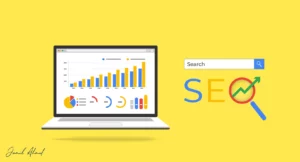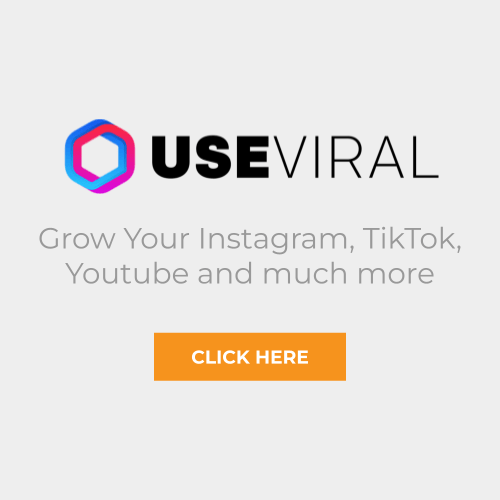SEO Glossary: 200+ SEO Terms Glossary & Definitions to Know


My step-by-step guide covers everything from defining your brand to creating a website, SEO and using social media to your advantage. Start building a strong personal brand today!
SEO Glossary: Learn 200+ essential SEO terms and definitions. Enhance your knowledge and improve your site’s search engine performance with our comprehensive guide.
Welcome to my SEO Glossary with over 200 terms to help you understand SEO better and improve your knowledge.
It’s important to know about keyword stuffing, meta descriptions, and internal links to improve your website’s search engine rankings.
Whether you’re conducting keyword research or analyzing bounce rates, my glossary covers all aspects of search engine optimization.
Explore definitions of Google Analytics, canonical URLs, and inbound links. Enhance your SEO strategies and ensure your website performs at its best in search results.
SEO Glossary: 150+ SEO Terms Glossary & Definitions to Know
301 Redirect
A permanent redirect from one URL to another, signalling search engines and browsers to transfer all ranking power to the new URL.
404 Error
An HTTP status code indicating that a requested webpage could not be found on the server.
A
Above the Fold
The portion of a webpage that is visible without scrolling is critical for user engagement and ad placement.
A/B Testing
A method of comparing two versions of a webpage or app against each other to determine which one performs better.
Absolute URL
A full URL that includes the complete path to a resource, including the protocol, domain, and file path.
AJAX
Asynchronous JavaScript and XML are programming techniques for creating fast, dynamic web pages by loading data in the background.
Algorithm
Search engines use a set of rules or processes to rank web pages and deliver relevant search results.
Algorithm Change
An update or modification to a search engine’s algorithm affects ranking and displaying search results.
Alt Attribute
HTML attribute that provides alternative text for images, used for accessibility and SEO purposes.
AMP
Accelerated Mobile Pages is an open-source HTML framework for creating fast-loading mobile web pages.
Analytics
The collection, analysis, and interpretation of data to understand and optimize web usage and performance.
Anchor Text
The clickable text in a hyperlink provides context about the linked page to users and search engines.
Artificial Intelligence (AI)
The simulation of human intelligence in machines is designed to perform tasks like learning and problem-solving.
Authority
The level of trust and credibility that search engines assign to a website or webpage is based on various factors.
Author Authority
An individual author’s credibility and reputation contribute to their content’s trustworthiness.
B
B2B SEO
Search engine optimization strategies are tailored for businesses targeting other businesses as their customers.
B2C SEO
Search engine optimization strategies focused on businesses targeting individual consumers as their audience.
Backlink
An incoming hyperlink from one web page to another is critical for SEO as it signals trust and authority.
Baidu
The leading search engine in China offers search services similar to Google, including web, image, and video search.
Bing
Microsoft’s web search engine, which provides web search results and services, is often integrated with other Microsoft products.
Black Box
A complex system or program where inputs and outputs are visible, but the internal workings are not.
Black Hat SEO
Unethical SEO practices that violate search engine guidelines, aiming for quick, short-term gains in rankings.
Blog
An online journal or informational website displaying information in reverse chronological order, with the latest posts appearing first.
Bounce Rate
The percentage of visitors who leave a website after viewing only one page indicates single-page sessions.
Bot
Software applications that perform automated tasks, including web crawling by search engines.
Branded Keyword
Keywords that include a specific brand name or variations are used to attract searchers looking for that brand.
Breadcrumb
A navigational aid showing the user’s location within a website enhances usability and SEO.
Broken Link
A hyperlink that leads to a non-existent or deleted webpage, resulting in a 404 error.
C
Cache
Temporary storage of web content to speed up future page loading times.
Cached Page
A snapshot of a webpage stored by a search engine, showing the page as it appeared when last indexed.
Canonical URL
The preferred URL for a webpage to avoid duplicate content issues across different URLs.
ccTLD
Country-code top-level domains, such as .uk for the United Kingdom, indicate the country of a website.
Citation
In local SEO, a business’s name, address, and phone number (NAP) are mentioned on other websites.
Click Bait
Content designed to attract clicks by using sensational or misleading headlines.
Click Depth
The number of clicks required to navigate from a website’s homepage to a specific page.
Click-Through Rate (CTR)
The percentage of users who click on a search engine results out of the total who viewed it.
Cloaking
A deceptive practice where different content is shown to search engines and users, violating guidelines.
CMS (Content Management System)
Software that allows users to create, manage, and modify content on a website without needing specialized technical knowledge.
Co-Citation
The frequency with which a third-party site mentions two websites together indicates a topic relationship.
Code-to-Text Ratio
The amount of text on a webpage compared to the HTML code, with a higher ratio, often indicates better content quality.
Comment Spam
Irrelevant or self-promotional comments are posted on blogs to get a backlink.
Competition
There is a rivalry between websites targeting the exact keywords and audiences for better search rankings.
Content
Any information or media published on a website, such as text, images, videos, or sounds.
Content is King
A phrase emphasizing the importance of high-quality, valuable content for SEO and online success.
Conversion
When a website visitor completes a desired action, like making a purchase or signing up for a newsletter.
Conversion Rate
The percentage of visitors who complete a desired action out of the total number of visitors.
Conversion Rate Optimization (CRO)
The process of improving the number or quality of conversions on a website through testing and changes.
Core Update
Broad changes to Google’s core algorithm that affect search rankings and results.
Core Web Vitals
Metrics that measure user experience, including loading performance, interactivity, and visual stability.
Correlation
SEO often uses a measure of the relationship between two or more variables to infer ranking factors.
Crawl Budget
The number of pages a search engine will crawl on a site within a given timeframe.
Crawl Error
Issues encountered by search engines while attempting to crawl a webpage.
Crawler
A bot that visits web pages to collect data for search engine indexing.
Crawling
The process by which search engines discover and scan web pages.
CSS
Cascading Style Sheets are used to define the look and layout of web pages.
Customer Journey
The steps a customer takes from discovering a brand to purchasing and beyond.
D
Data
Information collected from various sources is used for analysis and decision-making in SEO.
Dead-End Page
A webpage that has no links to other pages halts user navigation.
Deep Link
A link pointing to a specific page or content within a website, not just the homepage.
Deep Link Ratio
The proportion of internal links that point to pages other than the homepage.
De-index
Removing a webpage or website from a search engine’s index.
Direct Traffic
Visitors who arrive at a website by typing the URL directly into their browser.
Directory
A list of websites, usually categorized, organizes, and provides links to various sites.
Disavow
A tool in Google Search Console used to ignore unwanted or harmful backlinks.
DMOZ
The Open Directory Project, a human-edited directory of websites, is now defunct.
Do-follow
Links that pass SEO value from one site to another influence search rankings.
Domain
The principal address of a website, such as example.com.
Domain Age
The length of time a domain has been registered and active.
Domain Authority
A metric indicating the strength and ranking potential of a website.
Domain History
The past activities, ownership, and backlinks associated with a domain.
Doorway Page
Webpages are created solely to rank for specific keywords and funnel users to a different page.
DuckDuckGo
A search engine focused on user privacy and not tracking search history.
Duplicate Content
Content that appears in more than one place on the internet can harm search rankings.
Dwell Time
The time a user spends on a page before returning to the search results.
E
E-E-A-T
It stands for Experience, Expertise, Authoritativeness, and Trustworthiness, which are crucial for SEO quality.
E-commerce
The buying and selling of goods or services online.
Editorial Link
A link is placed within content naturally, without payment or manipulation.
.edu Links
Backlinks from educational institution websites are often considered high authority.
Engagement Metrics
Measurements of user interaction with a website, such as clicks, time on page, and shares.
Entities
Recognizable concepts or objects like people, places, and things help search engines understand content.
External Link
A hyperlink pointing to a page on a different domain than the one it’s on.
F
Featured Snippet
A summary of an answer to a user’s query is displayed at the top of Google search results.
Findability
Information can easily be found on a website or through a search engine.
First Link Priority
The principle is that search engines consider only the first link’s anchor text when multiple links point to the same URL.
Footer Link
Links placed in the bottom section of a webpage are often used for site navigation.
Freshness
The recency of content affects its relevance and ranking in search results.
G
The world’s most popular search engine, providing web search, ads, and various online services.
Google Analytics
A tool for tracking and reporting website traffic and user behaviour.
Google Bomb
Manipulating search results to rank a site for a misleading or controversial term.
Googlebot
The web crawling bot used by Google to index web pages for its search engine.
Google Dance
A term describing the volatility in search engine rankings during an update to Google’s index.
Google Hummingbird
A search algorithm focused on understanding the meaning behind queries for more relevant results.
Google Panda Algorithm
An algorithm update aimed at reducing the ranking of low-quality content.
Google Penguin Algorithm
An algorithm update targeting webspam and manipulative link practices.
Google Pigeon Update
An algorithm update improves local search results by incorporating traditional ranking signals.
Google RankBrain
A machine learning-based algorithm component that helps process search queries.
Google Sandbox
A theorized filter that initially prevents new websites from ranking well.
Google Search Console
A tool for monitoring, maintaining, and troubleshooting a site’s presence in Google search results.
Google Search Quality Rater Guidelines
Google’s human evaluators used guidelines to assess the quality of search results.
Google Trends
A tool that analyzes the popularity of top search queries across regions and languages.
Google Webmaster Guidelines
Recommendations from Google to help websites avoid penalties and improve their search performance.
.gov Links
Backlinks from government websites are considered high authority.
Gray Hat SEO
SEO practices that are ambiguous and not clearly defined as black or white hat.
Guest Blogging
Writing content for another website to gain exposure and backlinks.
H
Heading
HTML tags (H1-H6) define the headings and subheadings on a webpage.
Headline
The title of a webpage or article is usually marked by an H1 tag.
Head Term
A popular, high-volume keyword is often more competitive to rank for.
Hidden Text
Text that is invisible to users but visible to search engines is often used deceptively.
Hilltop Algorithm
An algorithm used to identify authoritative web pages on a specific topic.
HITS Algorithm
Hyperlink-Induced Topic Search, an algorithm evaluating the link structure of webpages.
Homepage
The main page of a website typically serves as the starting point for navigation.
.htaccess File
A server configuration file is used to control the behaviour of a website, such as URL redirects.
HTML
Hypertext Markup Language is the standard language for creating web pages.
HTTP
Hypertext Transfer Protocol is the protocol used to transmit web pages on the internet.
HTTPS
Hypertext Transfer Protocol Secure is an extension of HTTP for secure communication over a computer network.
Hub Page
A central resource page on a website that links to related content on the same topic.
I
Inbound Link
A hyperlink from an external website pointing to your site, also known as a backlink.
Index
Search engines use a database of web pages and their content to generate search results.
Indexability
The ability of a web page to be crawled and indexed by search engines.
Indexed Page
A web page that has been discovered crawled, and stored in a search engine’s database.
Information Architecture
The organization and labelling of content on a website improve usability and findability.
Information Retrieval
The process of obtaining relevant information from a large repository, such as a search engine index.
Internal Link
A hyperlink that connects one page of a website to another page on the same website.
IP Address
A unique string of numbers identifies each computer using the Internet Protocol to communicate over a network.
J
JavaScript (JS)
A programming language used to create dynamic and interactive effects within web browsers.
K
Keyword
A word or phrase that users enter into search engines, which SEO professionals target to rank content.
Keyword Cannibalization
When multiple pages on the same website compete for the same keyword, harming rankings.
Keyword Density
The percentage of times a keyword appears on a page relative to the total word count.
Keyword Research
The process of finding and analyzing actual search terms that people enter into search engines.
Keyword Prominence
Placing keywords early in content to improve visibility and ranking potential.
Keyword Stemming
The practice of using variations of a keyword (e.g., “run,” “running,” “runner”) to improve relevance.
Keyword Stuffing
Overloading a webpage with keywords to manipulate search rankings is a practice penalized by search engines.
Knowledge Graph
A knowledge base used by Google to enhance search results with information gathered from various sources.
Knowledge Panel
Information boxes appear on Google when searching for entities (people, places, organizations, etc.).
KPI
A key performance indicator is a measurable value demonstrating how effectively a company achieves critical objectives.
L
Landing Page
A standalone web page created specifically for a marketing or advertising campaign to convert visitors.
Latent Semantic Indexing (LSI)
An information retrieval method that helps search engines understand the context of words and phrases.
Lead
A potential customer who has expressed interest in a product or service.
Link
A hyperlink connecting one webpage to another is crucial for navigation and SEO.
Link Bait
Content designed to attract attention and encourage people to link to it from other websites.
Link Building
The process of acquiring hyperlinks from other websites to improve SEO and site authority.
Link Equity
The value passed from one site to another through hyperlinks impacts search rankings.
Link Farm
A group of websites created solely to link to each other, violating search engine guidelines.
Link Juice
Informal term for the SEO value passed through links from one page to another.
Link Profile
The collection of backlinks pointing to a website affects its search engine ranking.
Link Stability
The consistency of a link remaining on a page over time contributes to its trustworthiness.
Link Velocity
The rate at which a website gains backlinks over time, with sudden spikes possibly indicating manipulation.
Log File
A file that records server activity, including visitors’ IP addresses, requests, and timestamps.
Log File Analysis
The process of examining log files to understand website traffic and crawler behaviour.
Long-Tail Keyword
Particular and less common search phrases with lower search volume but often higher conversion rates.
M
Machine Learning
A subset of AI where systems use data to learn and make decisions without explicit programming.
Manual Action
A penalty applied by Google to a site for violating guidelines, reducing its search visibility.
Meta Description
A summary of a webpage’s content, shown in search results, influencing click-through rates.
Meta Keywords
Modern search engines largely ignore HTML tags listing keywords relevant to a page due to misuse.
Meta Tags
Snippets of text in HTML that describe a page’s content to search engines and visitors.
Metric
A quantifiable measure is used to track and assess the status of a specific SEO process.
N
Natural Link
A backlink is given naturally by another site without any payment or reciprocal action.
Negative SEO
Malicious tactics aimed at damaging a competitor’s search rankings.
Niche
A specific segment of the market with a highly focused topic or audience.
Noarchive Tag
A meta tag that tells search engines not to store a cached copy of your page.
Nofollow Attribute
An HTML attribute that tells search engines not to follow a specific link, preventing it from passing link equity.
Noindex Tag
A meta tag instructs search engines not to index a specific page in search results.
Nosnippet Tag
A meta tag preventing search engines from showing a snippet for the page in search results.
O
Off-Page SEO
Optimization activities outside a website to improve its search engine rankings, such as link building.
On-Page SEO
Optimization activities are performed directly on a website to improve its search engine rankings.
Organic Search
Non-paid search results are based on relevance and quality search engine algorithms determine.
Orphan Page
A webpage with no internal links pointing to it, making it difficult for search engines to find.
Outbound Link
A hyperlink on your website that points to a page on a different domain.
P
PageRank
An algorithm used by Google to rank web pages based on their link structure and authority.
Page Speed
The time it takes for a webpage to fully load is a factor in search rankings and user experience.
Pageview
An instance of a page being loaded or reloaded in a web browser.
Paid Search
Ads that appear on search engines above or below organic results are typically based on a pay-per-click model.
PBN
Private Blog Network, a group of sites used to build links and manipulate search rankings, is considered a black hat tactic.
Portable Document Format is a file type that search engines can index but may need optimization.
Penalty
A punishment by search engines for violating guidelines, resulting in lower rankings or removal from the index.
Persona
A fictional representation of an ideal customer based on market research and accurate data.
Personalization
Customizing search results based on a user’s search history, location, and preferences.
PHP
A server-side scripting language used to develop dynamic and interactive web pages.
Piracy
Copying and distributing content illegally, which search engines aim to penalize by lowering infringing pages’ rankings.
Pogo-sticking
When a user quickly navigates back and forth between a SERP and its listed results, this indicates dissatisfaction with the results.
Position
The rank of a webpage within search engine results for a specific query.
PPC (Pay Per Click)
A type of online advertising where advertisers pay a fee each time their ad is clicked.
Q
QDF
Query Deserves Freshness is a Google algorithm that prioritizes fresh content for specific search queries.
Quality Content
Valuable, informative, engaging content and satisfying user intent contribute to better rankings.
Quality Link
An inbound link from a reputable, relevant, and authoritative website positively impacts SEO.
Query
The word or phrase a user types into a search engine to find information.
R
Rank
The position a webpage holds within the search engine results for a given query.
Ranking Factor
Search engines consider an element or signal to determine the ranking of a webpage.
Reciprocal Links
Links exchanged between two websites are often seen as manipulative if done excessively.
Redirect
A technique that sends users and search engines from one URL to another, often used to avoid broken links.
Referrer
The URL of the previous webpage linked to the current website is being viewed.
Reinclusion
The process of requesting a search engine to reconsider a site for indexing after it was removed.
Relevance
The degree to which content on a webpage matches the user’s search query.
Reputation Management
Strategies aimed at influencing and controlling a brand’s reputation online, particularly in search results.
Responsive Website
A website is designed to adapt its layout and content to fit different screen sizes and devices.
Rich Snippet
Enhanced search results display additional information such as reviews, ratings, or prices.
robots.txt
A file on a website that tells search engine crawlers which pages or sections should not be indexed.
Return on Investment (ROI)
A measure of the profitability of SEO activities is calculated by dividing net profit by the investment cost.
S
Schema
Structured data markup that helps search engines understand the content of a webpage.
Scrape
The process of extracting data from websites is often used for indexing or data analysis.
Search Engine
A software system that enables users to search for information on the internet, such as Google or Bing.
Search Engine Marketing (SEM)
Internet marketing promotes websites by increasing their visibility in search engine results, primarily through paid advertising.
Search Engine Optimization (SEO)
The practice of improving the quality and quantity of website traffic by increasing the website’s visibility to search engine users.
Search Engine Results Page (SERP)
A page displayed by a search engine in response to a user’s query, listing results of web pages related to the query.
Search History
A record of a user’s search queries entered into a search engine.
Share of Voice
The measure of the market a brand owns compared to competitors in terms of visibility and engagement.
Sitelinks
Links to a website’s subpages that appear under the main URL in a search engine result, enhancing navigation.
Sitemap
A file or page listing all the pages on a website is used to inform search engines about the organization of the site’s content.
Sitewide Links
Links on every website page, typically in the footer or sidebar, are used for consistent navigation.
Social Media
Platforms where users create, share, and engage with content, impacting SEO through social signals.
Social Signal
Metrics indicating a site’s influence on social media, such as likes, shares, and comments.
Spam
Irrelevant or low-quality content intended to manipulate search rankings or deceive users.
Spider
A program used by search engines to crawl web pages for indexing.
Split Testing
Comparing two versions of a webpage to determine which performs better.
SSL Certificate
A digital certificate that secures data transmitted between a user’s browser and a website.
Status Codes
HTTP responses indicate a web request’s status, such as 404 for not found or 200 for OK.
Stop Word
Search engines often ignore common words like “a,” “the,” or “in” to save indexing space.
Subdomain
A separate section of a website, denoted by a prefix to the main domain, e.g., blog.example.com.
T
Taxonomy
The classification and organization of content on a website for better usability and SEO.
Time on Page
The amount of time a visitor spends on a webpage before navigating away.
Title Tag
An HTML element specifying a web page’s title is shown in search results and browser tabs.
Top-Level Domain (TLD)
The last domain name segment, such as .com, .org, or .net.
Traffic
The website visitors come from various sources, including search engines and social media.
Trust
A measure of a site’s credibility and reliability affects its search engine ranking.
TrustRank
An algorithm assesses a web page’s trustworthiness based on its links and content.
U
User-Generated Content (UGC)
Content created by users rather than the site owner, such as reviews, comments, and forum posts.
Universal Search
Integrating various types of content (e.g., images, videos, news) into search engine results.
Unnatural Link
Links are deemed manipulative by search engines, often leading to penalties.
URL
Uniform Resource Locator, the address of a webpage on the internet.
URL Parameter
Variables are added to a URL to track user behaviour or customize content.
Usability
It is easy and efficient for users to navigate and interact with a website.
User Agent
Software acting on behalf of a user, such as a web browser or crawler.
User Experience (UX)
The overall experience and satisfaction a user has when interacting with a website.
V
Vertical Search
A specialized search focusing on a specific type of content, like images or shopping.
Virtual Assistant
AI-powered software, like Siri or Alexa, performs tasks or searches via voice commands.
Visibility
The extent to which a website is seen in search engine results and across the web.
Voice Search
Technology allows users to search the web using spoken commands.
W
Webpage
A single document on the internet, part of a website, is accessible via a URL.
Website
A collection of related web pages under a single domain, typically including a homepage.
Webspam
Techniques that manipulate search engine rankings, violating guidelines, such as keyword stuffing or link schemes.
White Hat SEO
Ethical SEO practices that follow search engine guidelines, focusing on quality content and user experience.
Word Count
A web page’s total number of words is often considered for content quality and SEO.
WordPress
A popular content management system (CMS) is used for creating and managing websites and blogs.
X
XML
Extensible Markup Language is a format for encoding documents readable by humans and machines.
XML Sitemap
A file that lists a website’s pages helps search engines crawl and index the site more effectively.
Y
Yahoo
A web services provider with a search engine, now powered by Bing, offering various internet services.
Yandex
Russia’s most popular search engine also provides various internet services like maps and email.
Our SEO Glossary equips you with the essential terms and definitions to enhance your website’s performance. Use this knowledge to optimize effectively and achieve better search engine rankings.
How to Use this SEO Glossary?
Using this SEO Glossary is straightforward and can significantly boost your understanding of Search Engine Optimization.
Whether you’re a beginner or an experienced professional, this glossary serves as a handy reference for decoding SEO jargon. Simply scroll through the list of over 200 terms to find definitions and explanations that clarify complex concepts.
To get the most out of this glossary, start by familiarizing yourself with the basic terms like “Keywords,” “Backlinks,” and “SERP.”
These foundational concepts will help you grasp more advanced SEO strategies as you dive deeper into the glossary. If you come across a term you’re unfamiliar with while reading an SEO article or implementing a new strategy, refer back to this glossary for a quick and clear definition.
Bookmark this page and refer to it whenever needed. As SEO evolves, new terms emerge, and definitions change.
Keeping this glossary at your fingertips will help you stay up-to-date and ensure your SEO practices remain effective and relevant.
SEO Glossary FAQs
What is an SEO glossary, and why is it important?
An SEO glossary is a comprehensive list of terms and definitions related to Search Engine Optimization (SEO). It’s important because it helps both beginners and experienced marketers understand key concepts, improving their ability to optimize websites effectively.
How can an SEO glossary help beginners in digital marketing?
An SEO glossary simplifies complex jargon and terms, making it easier for beginners to learn and apply SEO strategies without confusion. It serves as a quick reference guide to better understand SEO discussions and tutorials.
Are there common SEO terms that everyone should know?
Yes, some common SEO terms everyone should know include “Keywords,” “Backlinks,” “Meta Tags,” “Organic Traffic,” and “SERP.” These terms are fundamental to understanding how SEO works.
How frequently should I refer to an SEO glossary?
You should refer to an SEO glossary whenever you come across unfamiliar terms or when you need to refresh your knowledge. It’s also useful when learning new SEO techniques or reading industry updates.
Does an SEO glossary get updated, and why is that necessary?
Yes, an SEO glossary should be regularly updated to include new terms and evolving definitions. SEO is a dynamic field, and staying current with the latest terminology helps ensure your strategies remain effective and aligned with industry standards.





